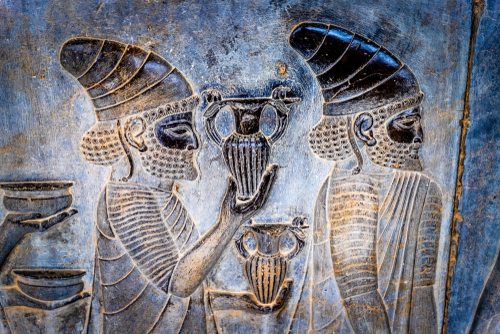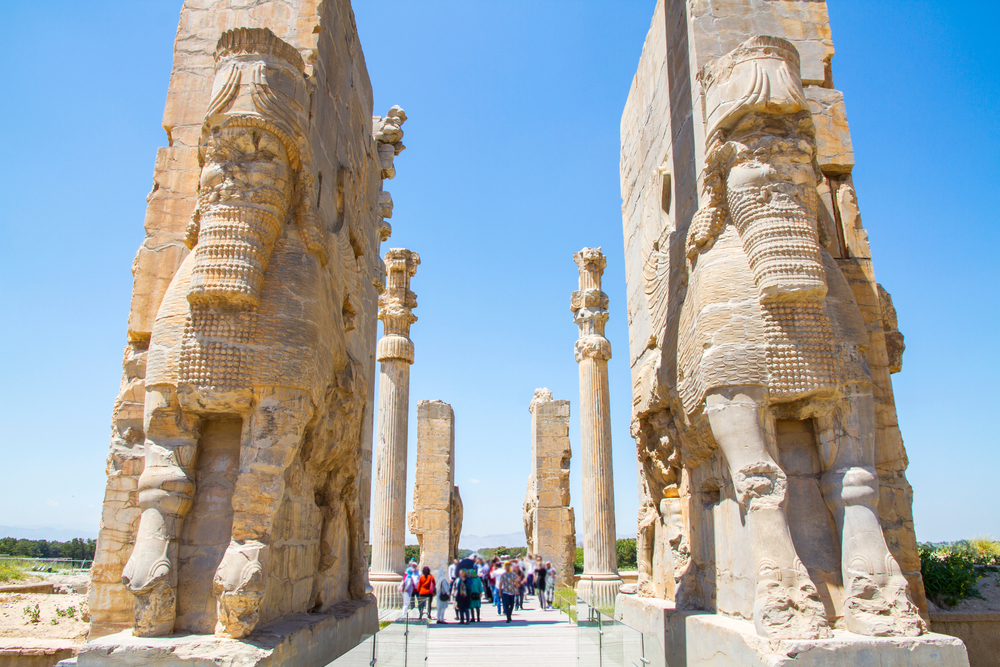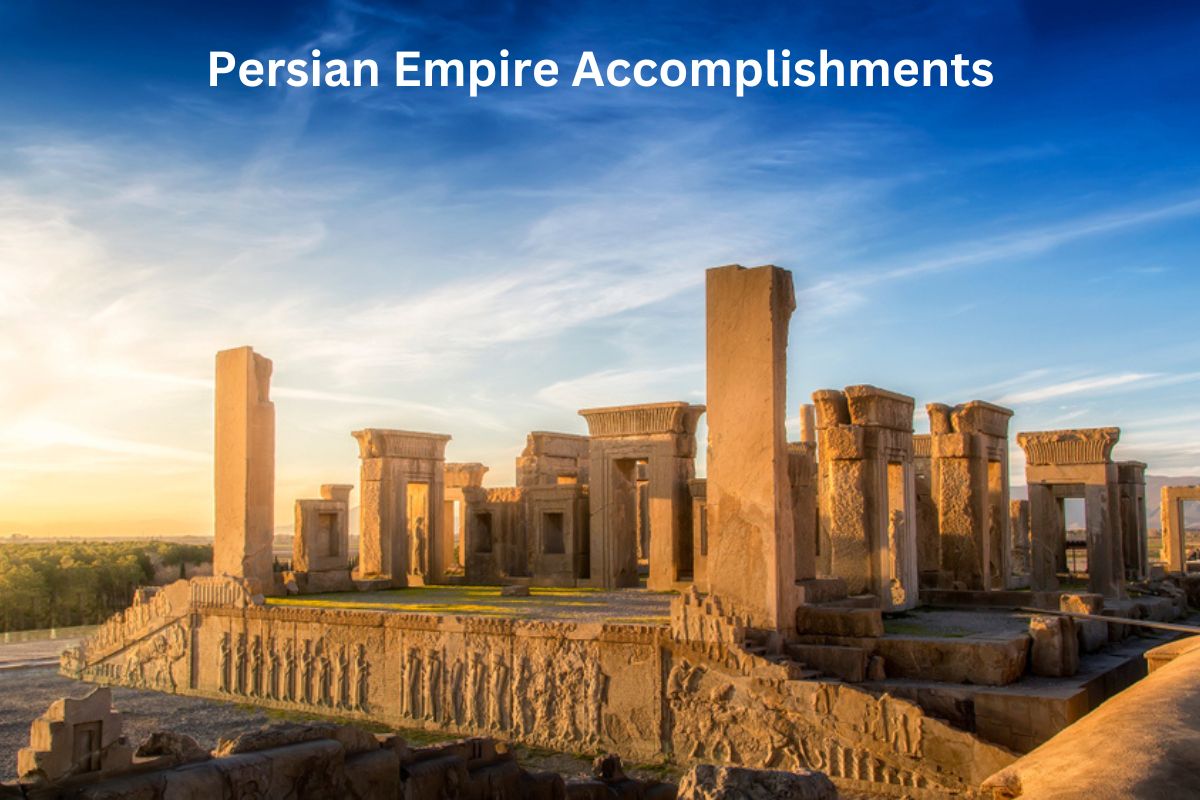The Persian Empire, also known as the Achaemenid Empire, was an ancient empire that thrived from the 6th century BCE to the 4th century BCE.
It achieved numerous significant accomplishments during its existence, leaving a lasting impact on history.
From territorial expansion and efficient governance to cultural tolerance and architectural marvels, the Persian Empire showcased a range of achievements.
This brief introduction sets the stage for exploring the notable accomplishments of this influential empire.
Accomplishments of Persian Empire
1. Expansion of territories through conquest
The Persian Empire expanded its territories through military conquests led by powerful emperors like Cyrus the Great and Darius I. They conquered various regions, including Lydia, Babylon, Egypt, and parts of Greece.
Also Read: Facts About the Persian Empire
Through strategic military campaigns and diplomacy, the Persians established control over a vast empire that spanned three continents.
This expansion allowed them to exert influence, gather resources, and consolidate power.

2. Efficient administrative and governance systems
The Persian Empire developed a highly efficient administrative system that facilitated effective governance over its vast territories.
They divided the empire into provinces or satrapies, each governed by a satrap who oversaw local affairs, collected taxes, and maintained law and order.
Also Read: Timeline of the Persian Wars
The satraps were chosen by the emperor and were held accountable to the central government. This decentralized administrative structure allowed for effective management of diverse regions and cultures within the empire.
3. Construction of the Royal Road for trade and communication
The Persian Empire constructed the Royal Road, a remarkable feat of engineering that stretched over 1,500 miles (2,400 kilometers) from Susa in Persia to Sardis in Anatolia (modern-day Turkey).
This road network enabled swift communication and efficient trade across the empire. Stations were established along the road for messengers to change horses, ensuring a quick relay of messages and facilitating the movement of goods and information.
The Royal Road played a crucial role in connecting the diverse regions of the empire and promoting economic growth through increased trade and cultural exchange.
4. Policy of religious and cultural tolerance
The Persian Empire was known for its policy of religious and cultural tolerance, which set it apart from many other ancient empires.
The Persians respected and allowed the people within their empire to maintain their local customs, traditions, and religious practices.
Also Read: Accomplishments of Darius the Great
They did not impose their own religious beliefs on the conquered territories, instead promoting a policy of acceptance and coexistence.
This approach fostered cultural diversity and facilitated the exchange of ideas, art, and knowledge among different communities within the empire.
5. Introduction of a standardized currency (daric)
The Persian Empire introduced a standardized currency known as the daric. This gold coinage became widely accepted and circulated throughout the empire. The daric served as a common medium of exchange, promoting trade and economic stability.
The introduction of a standardized currency streamlined commercial transactions and facilitated economic growth by providing a reliable and universally recognized means of payment. It also simplified taxation and contributed to the empire’s economic prosperity.

6. Construction of the impressive capital city, Persepolis
Persepolis was the ceremonial capital of the Persian Empire, built by Emperor Darius I in the 6th century BCE. This grand city served as a testament to the empire’s wealth, power, and architectural prowess.
Persepolis featured monumental palaces, audience halls, and intricate stone reliefs that depicted scenes of imperial triumphs, religious rituals, and cultural diversity. The city showcased the empire’s artistic achievements and acted as a center for political and cultural gatherings.
It also served as a symbol of the Persian kings’ authority and provided a magnificent setting for royal ceremonies and diplomatic receptions. Persepolis stands as a UNESCO World Heritage site today, offering valuable insights into the grandeur of the Persian Empire.
7. Development of an efficient postal system (Angarium)
The Persian Empire established a sophisticated postal system known as the “Angarium.” This system consisted of a network of relay stations and messengers strategically placed along major routes throughout the empire.
The messengers would travel from one station to another, covering long distances in a short time.
At each station, the messenger would hand over the message to a fresh relay rider who would continue the journey. This system ensured the swift transmission of messages across vast territories, allowing for efficient communication between the central government and distant provinces.
The Angarium played a crucial role in maintaining effective administration, facilitating the exchange of information, and enabling quick decision-making within the empire.
8. Promotion of international trade and safe trade routes
The Persian Empire actively promoted international trade by ensuring the safety of trade routes and fostering peaceful relations with neighboring states.
They recognized the economic benefits of trade and sought to facilitate commercial exchange. The empire implemented policies that protected merchants and encouraged the flow of goods across borders.
They constructed and maintained well-guarded roads, such as the Royal Road, to ensure safe and efficient trade routes. These efforts boosted commercial activities, encouraged cultural interactions, and enhanced the empire’s economic prosperity.
9. Implementation of advanced irrigation systems
The Persian Empire implemented advanced irrigation techniques, such as qanats, to overcome the challenges of arid regions and promote agricultural productivity.
Qanats were underground channels that tapped into groundwater sources and transported water to the surface, allowing for the irrigation of farmland. These systems effectively distributed water to areas with limited rainfall and enabled cultivation in regions that would otherwise be unsuitable for agriculture.
The implementation of sophisticated irrigation systems supported food production, sustained populations, and facilitated the growth of cities and settlements in arid territories within the empire.
10. Preservation of ancient knowledge through libraries and academies
The Persian Empire recognized the importance of preserving knowledge and actively supported the establishment of libraries and academies. They collected and translated works from various cultures, including ancient Mesopotamian texts.
The empire became a center of intellectual activity, fostering the exchange of ideas and the development of science, philosophy, and literature. The libraries and academies served as repositories of knowledge, contributing to the preservation and dissemination of ancient wisdom.
The Persian Empire’s commitment to knowledge preservation laid the foundation for future advancements and intellectual pursuits in the ancient world.
